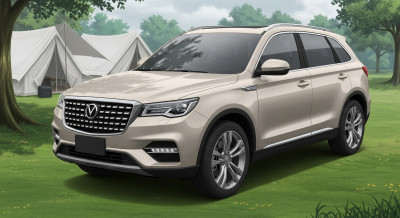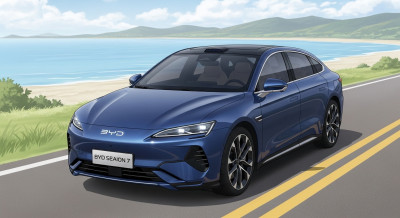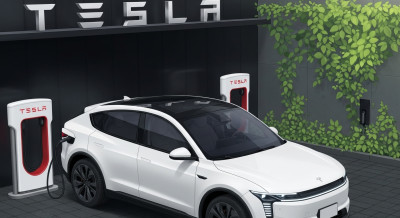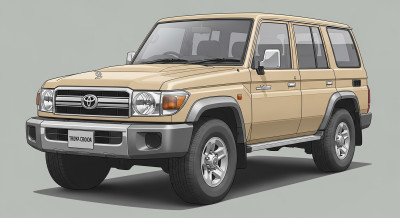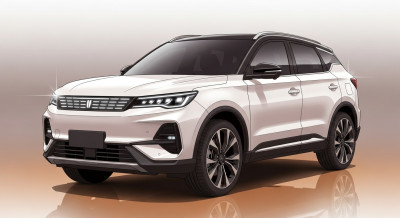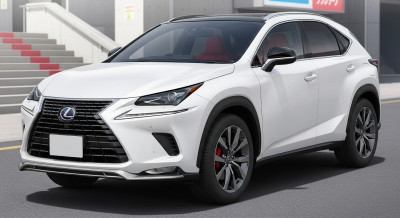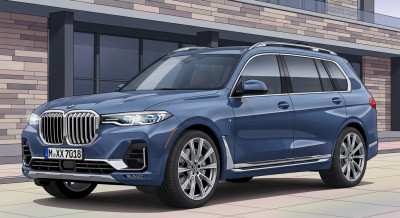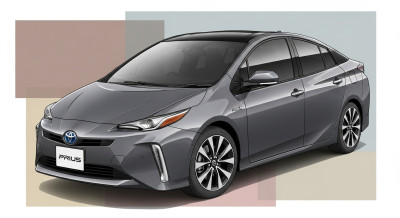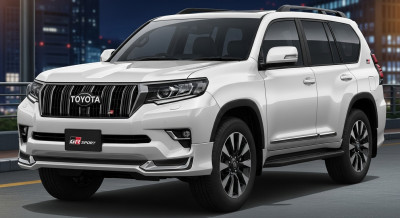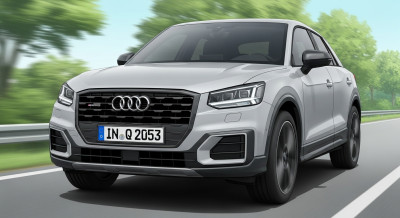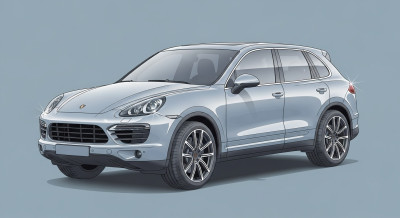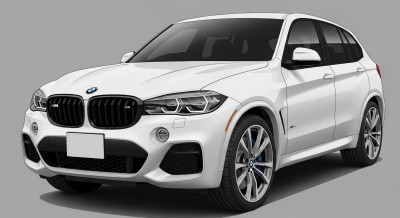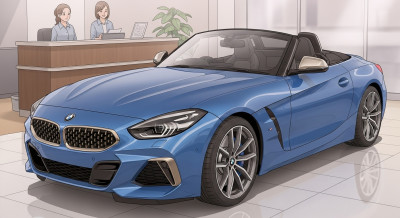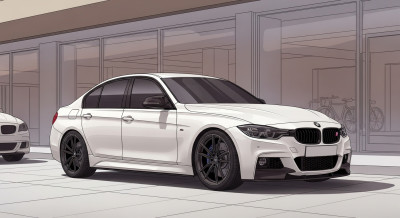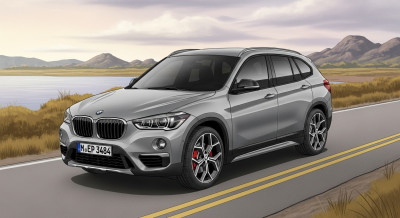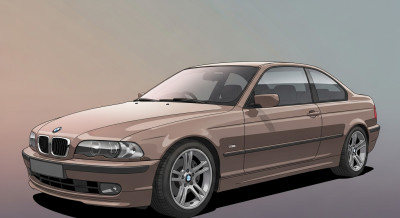2022 Mazda MX-30 | Review & Road Test
For the latest Mazda MX-30 pricing and information:
https://www.kbb.com/mazda/mx-30/
This is the 2022 Mazda MX-30
Personally, I like the way the MX-30 looks. It’s got similar features to the CX30, just a little more bulbous, and a more sloped roofline. Which might prove a problem with visibility. Mazda’s C-pillars do not make good windows. I’m still not a fan of the squished greenhouse, but I’m sure at some point this fad will go away.
I do want to point out these clamshell doors to get into the second row. These are supposed to make it easier to get into the back.
And it does, unless you’re parked very close to another car in a parking lot.
But because the vehicle is so small I get why this was the option. And that’s not all; the second row is small too. I have plenty of room because I’m a 5’4 inch person, but like the Toyota CH-R it feels a little claustrophobic back here.
In spite of its diminutive size, you get a surprising amount of cargo space back here. (graphic: 21.04 cu-ft).
The cabin looks absolutely stellar, with Mazda punching way above its weight class like they normally do. The MX 30 gets a two-toned interior made from sustainable fabrics and materials like cork.
The MX30 comes standard with an 8.8-inch center display, which is still not a touchscreen but operated by a rotary control.
This lower screen does have touch capability and you’ll use this for HVAC functions. And there is a volume knob, so that’s a plus. It additionally offers up Apple CarPlay and Android auto as well as heated front seats, leather-wrapped steering wheel and shift knob, a 7-inch digital gauge cluster, and 18-inch wheels.
Extra goodies on the Premium Plus package include, blind spot monitoring, and a lane-keeping assist, which will somewhat inelegantly coax the MX30 back into its lane should you wander. It gets an advanced audio system, and heated steering wheel. To me, you’re fine without this package. You get plenty on the base model.
And that’s a good thing because pricing starts around $33,500. The Premium Plus package sets you back closer to $36,500. Those both seem pretty steep because the MX-30 only gets a 35.5 kw lithium ion battery that gives it a 100-mile range.
The MX30 can use both Level 2 and 3 chargers, with the level 3 getting the crossover up to 80% charge in 36 minutes, which also, honestly, in the days of 20 minute 80% charges also sounds a bit lagging when you’re only talking about 100 miles. So get ready to plug in early and often.
Yes, adding more battery adds weight and that might be why Mazda’s stuck with the smaller unit, because, and here’s the other issue, the MX30’s motor only outputs 143 horsepower and 200 lb ft of torque.
When you get behind the wheel that torque number is decent but it diminishes quickly and that smaller power number starts to feel woeful. It seems to me if you’re going to use the MX designation, which is the same as on the fun, spirited MX-5 Miata, you should back that up with some zip. In the quickness department, the MX-30 does not translate MX characteristics.
Certainly, you’ll get up to speed on the highway but it feels like it takes longer than is should to get there.
As far as the ride quality goes, the MX-30 feel comfortable. I have no problems there. There’s nothing glaring that stands out as offensive or intrusive to the driving experience.
The steering feels good, too. There is absolutely nothing natural about it, but it’s not super mechanically assisted feeling and it’s got some heavy weight, which I like. Ultimately, you turn the wheel and it points you in the right direction. Which is 100% what you want.
The MX-30’s brakes straddle the line between natural feeling and obtrusive regen. They’ve actually got a pretty firm grab when you first depress them and feel substantial. You can use the paddles to adjust regen braking but even at its most aggressive setting it’s not enough to go full one-pedal.
The handling on the MX30 is decidedly Mazda-esque. This is a front wheel drive car, but thanks to its 40/60 weight distribution, it’s weighted like a mid-engine car, so those two factors for interesting challenges.
But as with their other fare, Mazda does a great job with its driving dynamics. Mazda has tweaked the torque vectoring software accordingly and the MX30 feels stable and turns effortlessly without a lot of commotion. But come out of a corner too hard and the tires aren’t your friends and not adding a whole lot of grip.
While it’s got some good things going for it, the MX-30 feels like a tail of two vehicles, and there are some things that might be a turn off. The MX-30 delivers the Mazda driving experience, now they just need to squeeze out a little more range and power out of this little guy.
00:00 2022 Mazda MX-30
0:29 Exterior
1:11 Interior
5:11 Competitors
6:14 Motor
6:36 Driving Impression
For the latest Mazda MX-30 pricing and information:
https://www.kbb.com/mazda/mx-30/
This is the 2022 Mazda MX-30
Personally, I like the way the MX-30 looks. It’s got similar features to the CX30, just a little more bulbous, and a more sloped roofline. Which might prove a problem with visibility. Mazda’s C-pillars do not make good windows. I’m still not a fan of the squished greenhouse, but I’m sure at some point this fad will go away.
I do want to point out these clamshell doors to get into the second row. These are supposed to make it easier to get into the back.
And it does, unless you’re parked very close to another car in a parking lot.
But because the vehicle is so small I get why this was the option. And that’s not all; the second row is small too. I have plenty of room because I’m a 5’4 inch person, but like the Toyota CH-R it feels a little claustrophobic back here.
In spite of its diminutive size, you get a surprising amount of cargo space back here. (graphic: 21.04 cu-ft).
The cabin looks absolutely stellar, with Mazda punching way above its weight class like they normally do. The MX 30 gets a two-toned interior made from sustainable fabrics and materials like cork.
The MX30 comes standard with an 8.8-inch center display, which is still not a touchscreen but operated by a rotary control.
This lower screen does have touch capability and you’ll use this for HVAC functions. And there is a volume knob, so that’s a plus. It additionally offers up Apple CarPlay and Android auto as well as heated front seats, leather-wrapped steering wheel and shift knob, a 7-inch digital gauge cluster, and 18-inch wheels.
Extra goodies on the Premium Plus package include, blind spot monitoring, and a lane-keeping assist, which will somewhat inelegantly coax the MX30 back into its lane should you wander. It gets an advanced audio system, and heated steering wheel. To me, you’re fine without this package. You get plenty on the base model.
And that’s a good thing because pricing starts around $33,500. The Premium Plus package sets you back closer to $36,500. Those both seem pretty steep because the MX-30 only gets a 35.5 kw lithium ion battery that gives it a 100-mile range.
The MX30 can use both Level 2 and 3 chargers, with the level 3 getting the crossover up to 80% charge in 36 minutes, which also, honestly, in the days of 20 minute 80% charges also sounds a bit lagging when you’re only talking about 100 miles. So get ready to plug in early and often.
Yes, adding more battery adds weight and that might be why Mazda’s stuck with the smaller unit, because, and here’s the other issue, the MX30’s motor only outputs 143 horsepower and 200 lb ft of torque.
When you get behind the wheel that torque number is decent but it diminishes quickly and that smaller power number starts to feel woeful. It seems to me if you’re going to use the MX designation, which is the same as on the fun, spirited MX-5 Miata, you should back that up with some zip. In the quickness department, the MX-30 does not translate MX characteristics.
Certainly, you’ll get up to speed on the highway but it feels like it takes longer than is should to get there.
As far as the ride quality goes, the MX-30 feel comfortable. I have no problems there. There’s nothing glaring that stands out as offensive or intrusive to the driving experience.
The steering feels good, too. There is absolutely nothing natural about it, but it’s not super mechanically assisted feeling and it’s got some heavy weight, which I like. Ultimately, you turn the wheel and it points you in the right direction. Which is 100% what you want.
The MX-30’s brakes straddle the line between natural feeling and obtrusive regen. They’ve actually got a pretty firm grab when you first depress them and feel substantial. You can use the paddles to adjust regen braking but even at its most aggressive setting it’s not enough to go full one-pedal.
The handling on the MX30 is decidedly Mazda-esque. This is a front wheel drive car, but thanks to its 40/60 weight distribution, it’s weighted like a mid-engine car, so those two factors for interesting challenges.
But as with their other fare, Mazda does a great job with its driving dynamics. Mazda has tweaked the torque vectoring software accordingly and the MX30 feels stable and turns effortlessly without a lot of commotion. But come out of a corner too hard and the tires aren’t your friends and not adding a whole lot of grip.
While it’s got some good things going for it, the MX-30 feels like a tail of two vehicles, and there are some things that might be a turn off. The MX-30 delivers the Mazda driving experience, now they just need to squeeze out a little more range and power out of this little guy.
00:00 2022 Mazda MX-30
0:29 Exterior
1:11 Interior
5:11 Competitors
6:14 Motor
6:36 Driving Impressions
 LEXUS
LEXUS  AUDI
AUDI  PORSCHE
PORSCHE  ROLLS-ROYCE
ROLLS-ROYCE  LAND ROVER
LAND ROVER  FERRARI
FERRARI  MASERATI
MASERATI  CADILLAC
CADILLAC  CHRYSLER JEEP
CHRYSLER JEEP 





![【マツダ MX-30】使える後席、上質な走り[clicccar公式 第2チャンネルです]](https://i.ytimg.com/vi/vR_tSoJRCd8/mqdefault.jpg)









